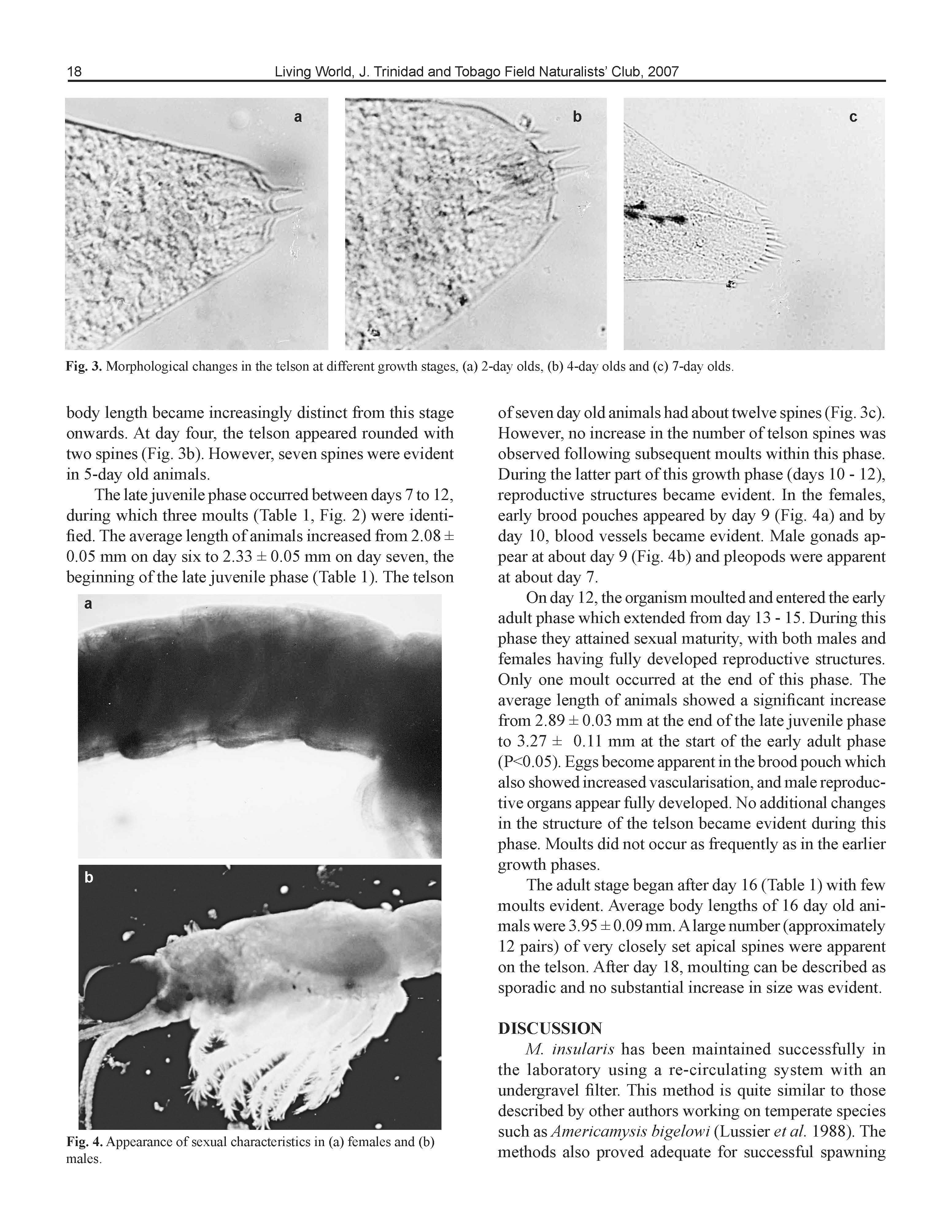Metamysidopsis insularis (Crustacea: Mysidacea): The Life History of a Mysid Species Suitable for Toxicological Testing in the Tropical Americas
Keywords:
Metamysidopsis insularis, Crustacea: Mysidacea, Mysid species, Carcinology, Toxicity tests, Effluent toxicityAbstract
Mysid species are routinely used in many regions temperate for toxicological assessment of chemicals and industrial and municipal effluents. Metamysidopsis insularis has recently been used in Trinidad and Tobago for toxicity tests, however, not much is known about its life cycle. Newly hatched juveniles were maintained under laboratory conditions and sampled daily for a period of 26 days. The mean body length was determined and used to generate a growth curve for M. insularis. It was found that for M. insularis, the maximum growth phase occurred during the first sixteen days and organisms attained sexual maturity between 12 - 15 days. Eight moults in five growth phases were identified for this species. The main stages identified were, early juveniles (0 - 2 days), juveniles (3 - 6 days), late juveniles (7 - 12 days), early adults (13 - 15 days) and adults (>16 days). These growth phases (early juvenile, juvenile, late juvenile, early adult and adult) were similar to those identified for Americamysis bahia, however, the days at which these stages occurred were different from M. insularis.

